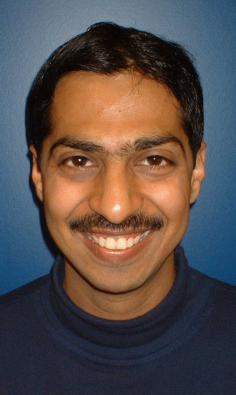Coupled Mode Theory Based Modeling and Analysis of Circular Optical Microresonators
Promotion Date: 14 October 2005
| I participated in de NAIS project, a European project in which Science and Technology have joined forces to optimize the optics based technologies for dense wavelength division multiplexing/demultiplexing. It is all about taking the large bandwidth optical fibre based networks to peoples’ computers and other household devices in order to take full advantage of its high speed features. Circular Optical Microresonators are one of the promising concepts: they are employed as compact and versatile wavelength filters. In the NAIS project various disciplines are at work: designers, material analysts and modellers, closely interacting. I did the modelling part and made visible how changes, in the material structure for instance, effects the performance bandwidth of the microresonator. |
What was your thesis about?
I participated in de NAIS project, a European project in which Science and Technology have joined forces to optimize the optics based technologies for dense wavelength division multiplexing/demultiplexing. It is all about taking the large bandwidth optical fibre based networks to peoples’ computers and other household devices in order to take full advantage of its high speed features. Circular Optical Microresonators are one of the promising concepts: they are employed as compact and versatile wavelength filters. In the NAIS project various disciplines are at work: designers, material analysts and modellers, closely interacting. I did the modelling part and made visible how changes, in the material structure for instance, effects the performance bandwidth of the microresonator.
So did you find the recipe to build the optimum microresonator?
No, but I did develop a simulation tool to calculate on a physical model. My way, by the way. is one way of modelling. There is a Czech group working on it as well, and they have developed another tool with a different explanation of the phenomena and thus a different theoretical physics impact. But I am quite happy with mine, it is a help to device designers to build reliable microresonators. The other day contracts were signed with C2V ( a Mesa+ spin off business) to commercialize this tool. After the telecom bubble burst in 2000/2001, you now again see an increased interest in optical network technology, but now based on technology that stands the test.
How does somebody from India comes to join a European project?
I applied. I wanted to work in a team and the project appealed to me. Coming from IIT Bombay helped of course (The Indian Institutes of Technology are renown throughout the world). Finally my application reached Brenny van Croesen who phoned me up and we decided to give it a try for three months. After that it was decided.
What are you going to do next?
I will apply for a postdoc, here or any place. I do not mind were I go, as long as I can stay in the same field.
What did you like about your stay here at Mesa?
Straightforward people and well defined rules. Things that work and are well thought of.
That is easy for a newcomer. The one thing I had to get used to is the organized structure. Everything is planned, or rather: everything needs to be planned. Supervisors have tight schedules.
I expect the rest of the Netherlands was also a bit of a culture or climatic shock to you?
No, not really. I adapted quite well. I like Enschede, which has all the facilities of a big city and all the eased pleasure of a smaller town. I like the cloudy skies and I even like walking in the rain!

